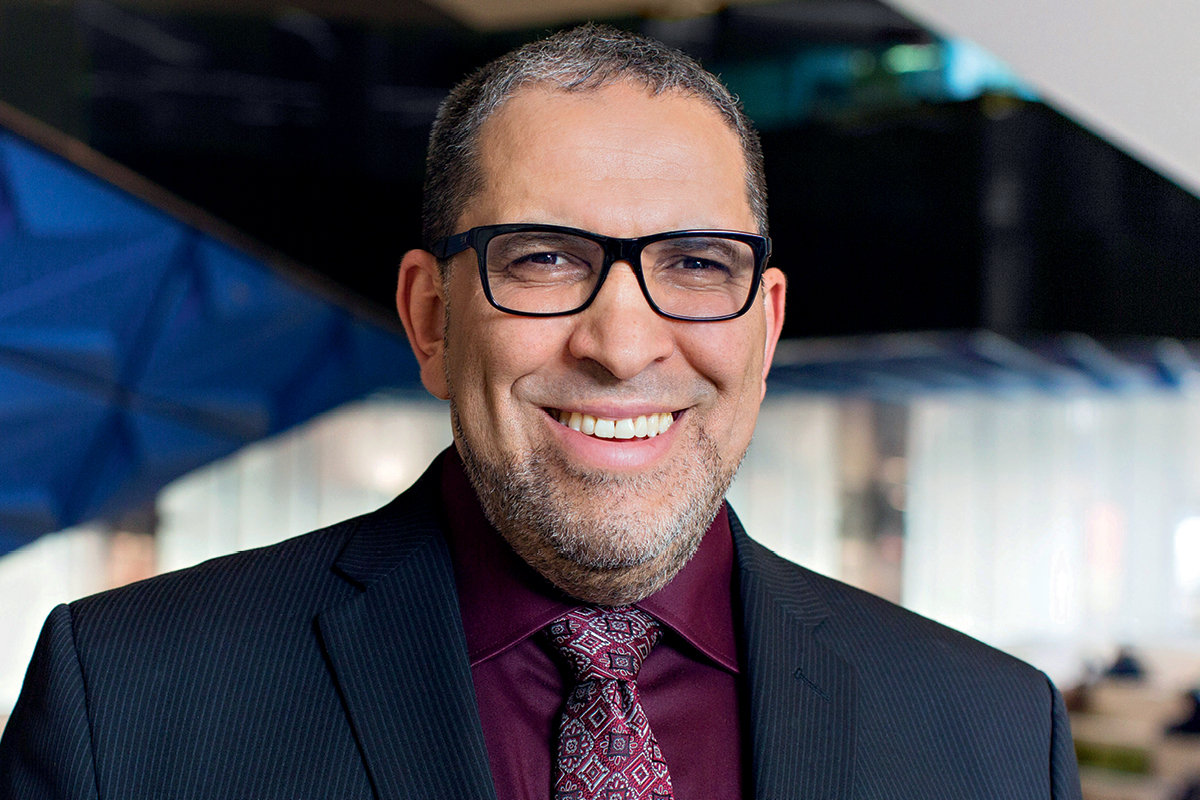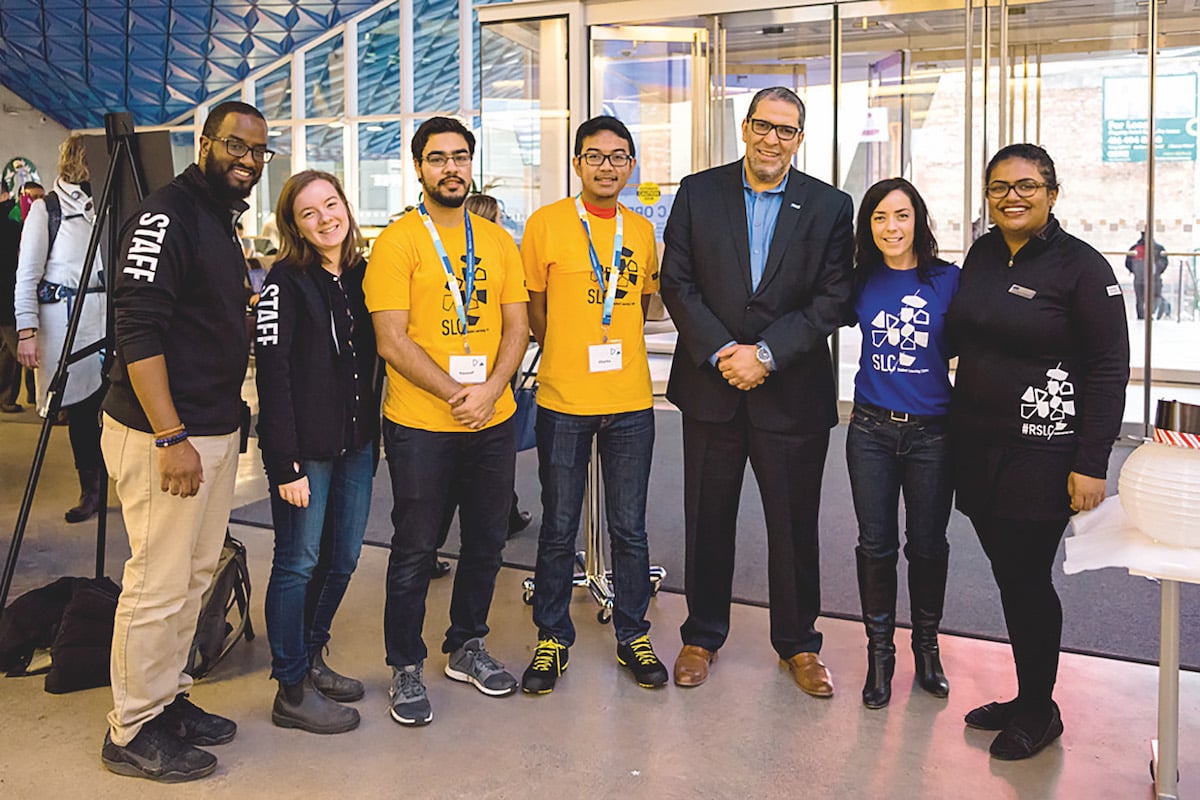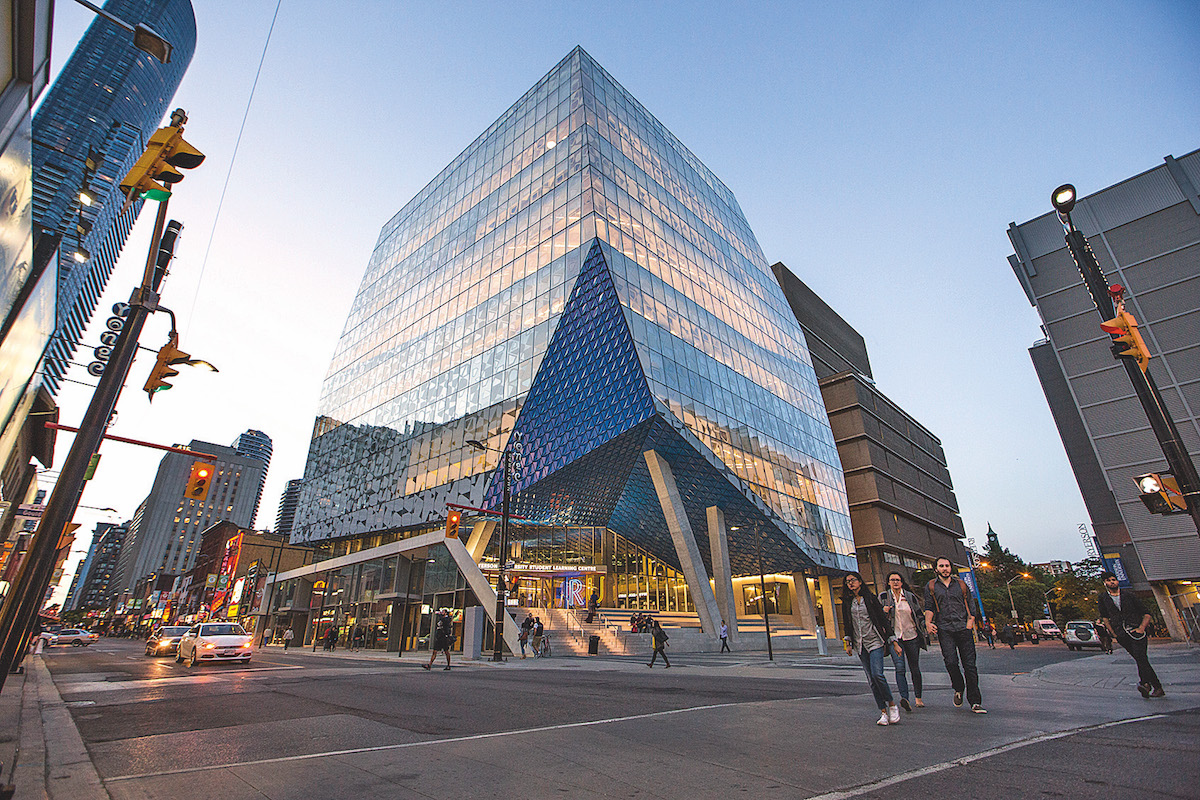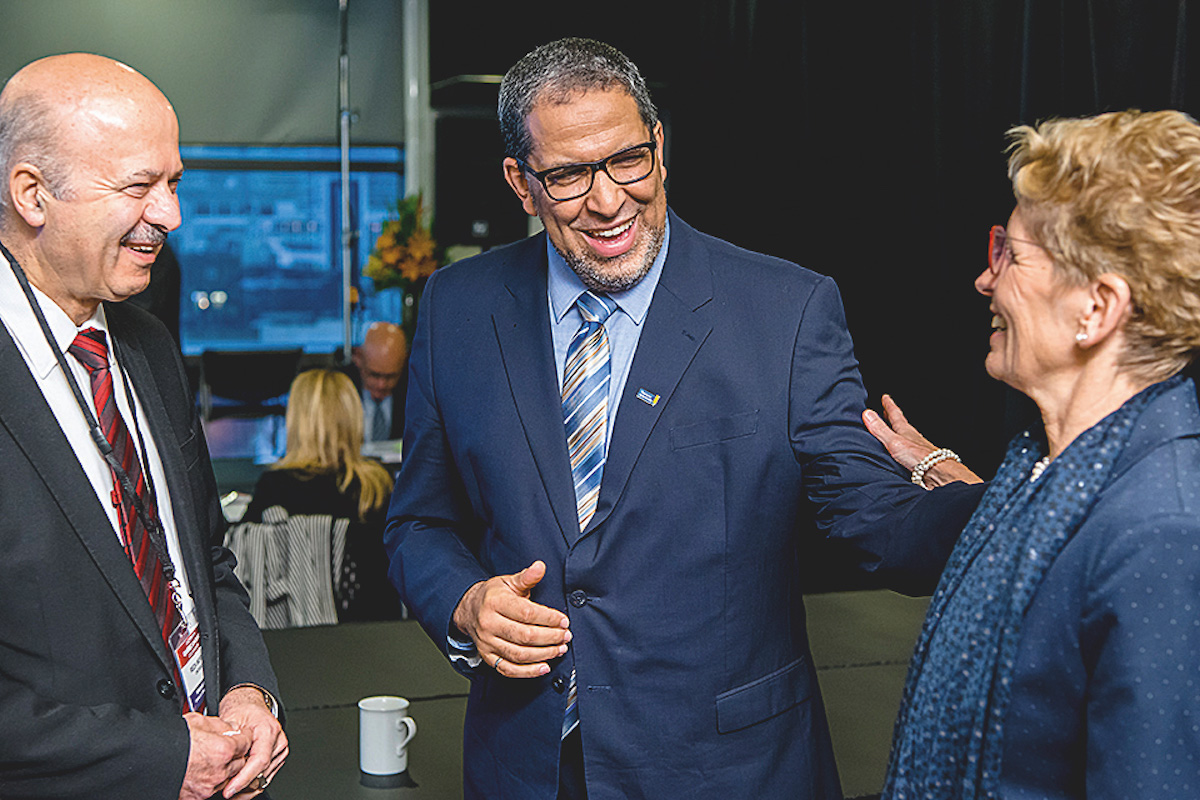A fixture of downtown Toronto, Ryerson University has been producing well-qualified graduates for more than 70 years. Not only that, but the institution has also helped shape the city around it, having been involved in numerous construction and restoration projects around Toronto. This includes, for example, the transformation of the iconic Maple Leaf Gardens into the Mattamy Athletic Centre – an arena for the university.

Ryerson’s President and Vice Chancellor Dr Mohamed Lachemi has been with the university for 20 years, a not-inconsiderable portion of the organization’s history. Before he took a leading role, Mohamed served as Dean of the Faculty of Engineering and Architectural Science, later taking on progressively more senior roles until being appointed to his current position.
Long-lived as Ryerson is, the current model of post-secondary education goes back even further, having been devised in the 19th century. For this reason, Mohamed believes it’s time to bring university education into the 21st century, and Ryerson is at the vanguard of this transformation.
“The current model is based on silos,” Mohamed explains. “All the education is done in one given discipline, in terms of knowledge, and we provide students with the necessary knowledge within that silo. In my opinion, that doesn’t work in the 21st century. We need to think beyond the silos. We need to push boundaries, by opening those walls between silos.
“We need to think beyond the silos. We need to push boundaries.”
“We should be creating opportunities for more partnerships and interactions between different disciplines. The model I foresee, and we are moving in that direction, involves more interdisciplinary learning opportunities, where you find a platform in which you can bring different disciplines to collaborate.
That’s exactly what’s happening in society. When students leave the education system, they’ll be working in an interdisciplinary world.
“Why don’t we prepare them for that here, where they can learn how to work with others, to collaborate, to better communicate their ideas to others not necessarily in the same discipline? That’s what employers are looking for, skills that are outside the knowledge of a single discipline. With these changes in mind, the university system can be more relevant and can respond better to the needs of society.”
In recent years, under Mohamed’s guidance, Ryerson has embraced a more practically minded mode of education. As part of the overhaul of King Street, Toronto’s entertainment corridor, Ryerson is assembling interdisciplinary teams of students to design an interactive art installation, adding vibrancy to an important cultural area.
The four-month project allows students to learn and work at the same time, granting them both education and experience.

Similarly, the university maintains partnerships with hospitals in downtown Toronto, as well as many banks (since the Financial District is walking distance from Ryerson).
In addition to providing students with practical experience, these partnerships allow the university to address social and infrastructure problems using innovation and community engagement.
Ultimately, this mode of education is a recognition of the reality that employers aren’t just looking for a university degree and theoretical knowledge. Rather, the modern job market rewards practical abilities and real-world learning.
While other universities facilitate internships, Ryerson has integrated practical and academic learning to a much greater extent, providing opportunities to work on real projects, supported by faculty members and industry leaders. Crucially, it’s about more than just work; this model aims at infusing students with the entrepreneurial spirit.
“My definition of innovation is to make sure that we continue to work with our students, staff and faculty, to always find a way to ask the right questions and challenge the status quo,” Mohamed says.
“Our model at Ryerson has evolved because of demand. Society’s expectations of universities are so high that we’re forced to adapt our thinking around what type of graduates we need to produce. We’re transforming our model of education from producing job seekers to producing job creators.”
“We’re transforming our model of education from producing job seekers to producing job creators.”
Central to creating these innovators is a unique experiential learning model developed by Ryerson. The DMZ (initially known as the Digital Media Zone) is a start-up incubator, which provides multidisciplinary co-working spaces for young aspiring entrepreneurs.
It is one of 10 zones in the larger zone learning network at Ryerson. The DMZ provides resources and mentors to students to either develop their own project, or work on someone else’s. Since its inception in 2010, the DMZ has helped launch 300 start-ups, and is ranked the world’s number one university incubator by UBI Global.
The success of the DMZ has seen replication of the model across the world, in partnership with local organizations. Ryerson and the Bombay Stock Exchange established the BSEI-Ryerson DMZ, an India-based incubator that facilitates connection with customers, mentors and investors between the Indian and North American markets. Last year, the network expanded to Vietnam.

Such partnerships help Ryerson improve its global reputation, as do other forms of collaboration with universities in the UK, South Africa and the United Arab Emirates. The university is also in discussion to launch a new campus with Sheridan College in Brampton, offering cybersecurity data science and business analytics programs.
The extent of Ryerson’s network of incubators and partners is a source of pride for Mohamed. “Those strategic partnerships are, for me, a measure of success,” he says. “We’re proud of the many exceptional institutions with which we’ve partnered.”
In fact, it’s more than just something to boast about – a global reputation is one half of Mohamed’s measurement of success. The other half is growth, in terms of capabilities, enrollment, and facilities. When Mohamed first came to the university, Ryerson had 23,000 students. Today, it hosts a student population double that size.
To accommodate the growing enrollment numbers, Ryerson has been undergoing significant physical expansion. The university is finalizing several new buildings, including a 600-bed residence for students.
A new law school is due to open in fall 2020, with a new Center of Urban Innovation also in the works, focusing on urban innovation – energy, water management and food production.
A state-of-the-art complex called the Daphne Cockwell Health Sciences Complex, slated to open in Spring 2019, provides an innovative academy space, administration offices and students’ residences.
“We measure growth by the interest we see from students, who are applying in large numbers to our institution,” says Mohamed.“Our applications continue to increase annually and, for the past few years, Ryerson has had the most applications for available spots in any university in the province of Ontario and maybe even in Canada.
That students continue to choose Ryerson as the place to pursue their post-secondary education is a clear marker of success for us.”
More than any other organization perhaps, a university’s focus is its people – those it shapes and molds into fully formed members of society, and those it employs to facilitate that process. Indeed, Mohamed considers human capital to be the most important aspect of the work a university does, in turning out entrepreneurs, thought leaders, and innovators.

“A good leader should empower their people and make sure they embrace the bold vision we have for the institution,” he says. “When you have talented people, you have to be open to new ideas, give them opportunities to express their views and opinions. Be curious.
Curiosity will always encourage a leader to listen well to others, not be judgmental, and let others contribute, because it’s important for us, in this environment, to provide an opportunity for people to have that open discussion.”
For Mohamed, it’s necessary to maintain this approach. He believes that when people feel their opinions and ideas are taken into account in strategic decision-making, they are invested in the outcome and the university itself.
Collaboration is a way to achieve staff engagement, which in turn better drives his mission to offer an educational experience that acknowledges the reality of today’s job market. The result is an institution that stands out from the crowd, building not just Toronto, but also the young professionals who will drive technological and economic innovation for years to come.
“Entrepreneurship and innovation is in our DNA,” says Mohamed. “Ryerson University is a hub for innovation, and has a particular relationship with the city. Toronto’s strengths enable us to recruit top talent, top talent enables us to produce great students, and that creates great start-ups. Those students and those start-ups help to strengthen Toronto’s economy and keep it a great place to live, work and study.”


